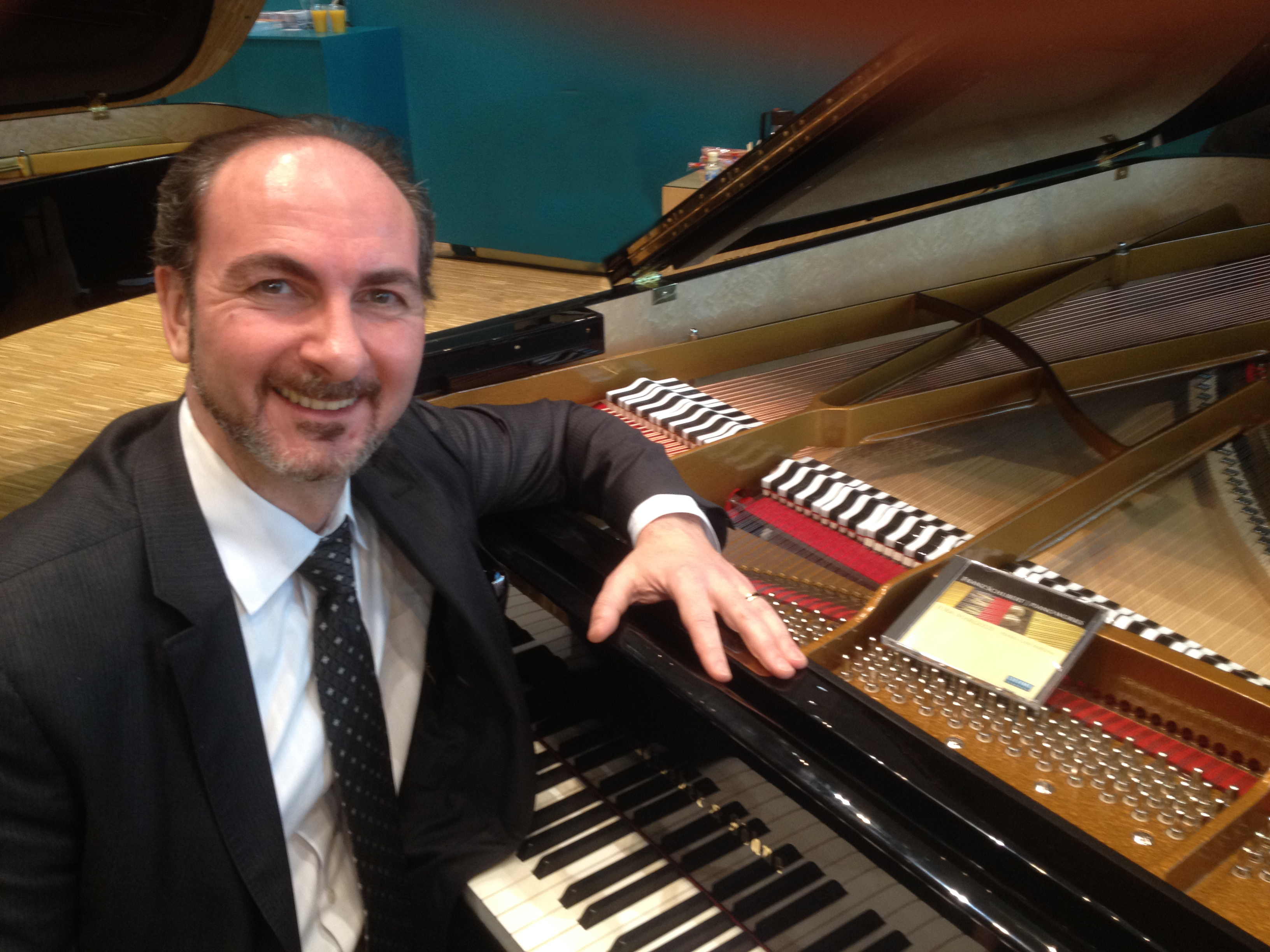
FAYETTEVILLE, Ark. – Grand piano construction hasn’t changed significantly since 1867, when Steinway & Sons and its three-pedal model won the “Grand Gold Medal of Honor” at the World’s Fair in Paris.
Jura Margulis wants to change that.
Margulis, who holds the Emily J. McAllister Endowed Professorship in Piano at the University of Arkansas, has collaborated with German manufacturer Steingraeber & Söhne to return the sordino pedal to the grand piano.
When pressed, the pedal creates a softer sound.
“One uses the sordino to augment an expressive range of the instrument,” he said. “It is not to mute the sound — it is an expressive tool.”
Margulis traveled to Frankfurt, Germany, last month to present the prototype piano at Musikmesse, the world’s leading fair for music instruments and live music. Margulis recorded a CD using the prototype and describes the piano on his website.
“Hayden, Mozart, Schubert and Beethoven, they were all familiar with the sordino pedal and used it when they composed,” said Margulis, an internationally acclaimed concert pianist and recording artist. “It is arcing back to the fortepianos of the older times. When you play this augmented instrument, you have the full range of the modern concert grand and you have a second piano under your hands. It’s not just softer; it is different. You can play with an enriched overtone mixture. You can also play articulations that Schubert wrote that you can’t play on the modern grand.
“We don’t play exactly what he wrote in many places in the compositions because it is not doable with the modern concert grand,” he said. “With this pedal, it is.”
Margulis calls the pedal “a bridge to the past.”
“Today, there are about 12 major firms that build pianos in Europe,” Margulis said. “Two hundred years ago, there were 2,000 companies building pianos in Europe, which meant that every little city had a piano builder and bigger cities like Vienna had 100 piano builders. They all tried to change and improve the instrument at hand.”
In the late 19th century, the three-pedal concert grand piano became ubiquitous, according to Margulis. Before that, some pianos had up to seven pedals, he said.
“There was no unification of the pedal mechanism in the past,” he said. “In the last 150 years, people tinkered with pianos but nothing stuck.”
About five years ago, Margulis became curious about what pianos looked and sounded like before the modern Steinway. He went to historic collections and played for hours. He played a piano from Schubert’s time and was drawn to the sound made by pressing the sordino pedal.
“The particular piano I was playing had four pedals and the quality of sound that you could produce with this instrument was so uniquely beautiful and inspiring,” he said. Beethoven, Schubert and so on, they mention the sordino pedal in their scores. Today, we don’t know this pedal so we misinterpret what it means. They had all pianos at their disposal on which to play and compose and the ones that they played had the sordino pedal. The idea was born in me to put this function into a modern concert grand.”
The last pedal to be added to the modern grand was the middle pedal, known as the sostenuto. It can sustain selected notes. In the prototype, known as Steingraeber D-232, the sordino takes the place of the sostenuto pedal.
“No musician outside of pianists actually knows what the middle pedal is for or what it does,” Margulis said. “In my entire repertoire, I used the middle pedal in one piece, while I would use the sordino pedal in my entire repertoire.”
Margulis has recorded nine CDs for Sony, Ars Musici, and Oehms Classics.
Born in St. Petersburg, Russia, Margulis was raised in Germany, where he studied with his father, Vitaly Margulis, at the Musikhochschule Freiburg (Freiburg Conservatory of Music). He was also a student at the prestigious Fondazione per il Pianoforte in Cadenabbia (International Piano Foundation) at Lake Como in Italy. He moved to the United States to study with Leon Fleisher at the Peabody Conservatory in Baltimore, and joined the U of A faculty in 1999.
Contacts
Jura Margulis, McAllister professor of piano
Music
479-575-4178, margulis@uark.edu
Chris Branam, research communications writer/editor
University Relations
479-575-4737,
cwbranam@uark.edu